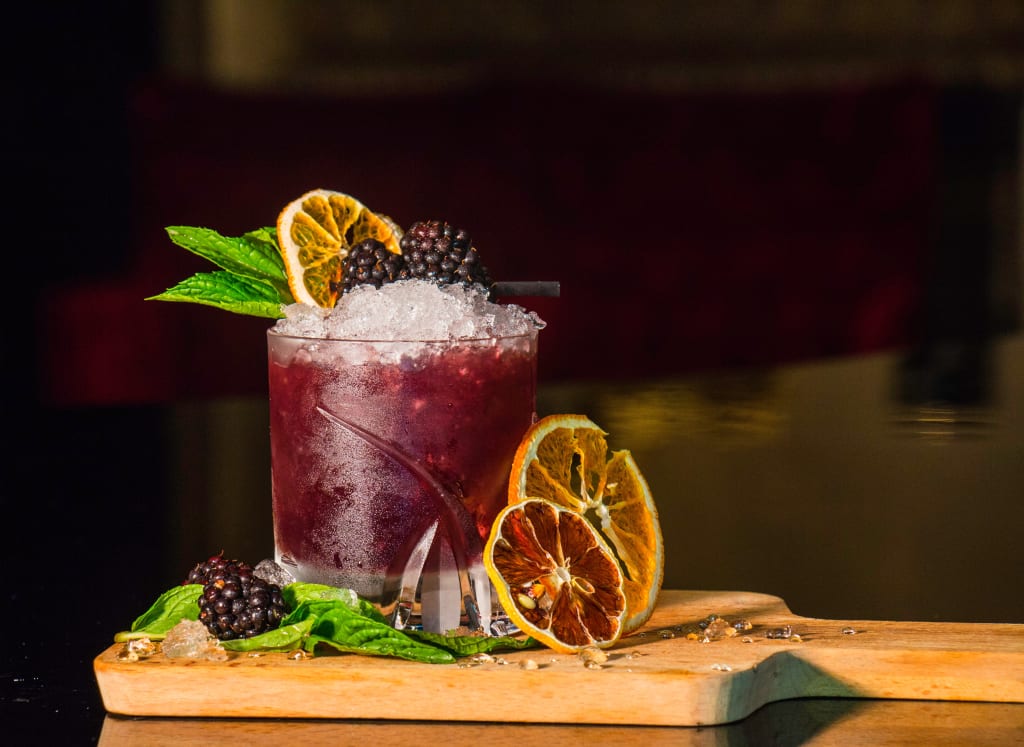Mixology 101
How to Make Delicious Cocktails at Home

Many of us are stuck at home, eyeing our half-emptied bottle of rum and a can of Coke and wishing we could be out and about on a Friday night. Don't despair: It's not as difficult as you might think to make yourself a delicious drink! You just have to understand the basic science of crafting cocktails, which is called mixology.
Composition
As with anything in life, balance is key when combining alcohol with other ingredients. The best cocktails have just enough alcohol to get you tipsy without tasting like alcohol. As a rule of thumb, you don’t want more than 30 percent of the ingredients to be alcoholic.
My guideline is to use 1 part spirits for every 3 parts of mixer. If you’re using multiple alcoholic substances, you can mix in a 1–2–9 composition (or stack the ratios as appropriate), but make sure that you have the strongest liquor in the smallest amount and avoid making a drink that’s more than 50 percent alcohol — unless you want to get yourself absolutely smashed.
It's also important to remember that each type of alcohol has distinctive taste. Mixing them all together is a great way to muddy those notes and make your drink not taste like anything. Typically, you want to let the base liquor’s flavor shine through and choose a mixer that complements, rather than masks, the alcohol. (For relatively tasteless spirits like vodka, you can make the base liquor a low-alcohol ingredient such as schnapps, then play off those notes.)
Complement each alcoholic ingredient's flavor profile with something that's non-alcoholic (or low-alcoholic) yet brings out the taste of the main ingredient. For example, whiskey is often paired with ginger ale or ginger beer, because the zesty taste of the ginger complements the deep notes of the whiskey. Similarly, a Hurricane uses lemon juice to add a bitter complement to the overwhelming sweetness of the rum.
Mixing Methods
Here are the three main ways to mix:
Pouring: When you order something basic, like a whiskey and Coke, at a bar, this is usually how they'll mix it. Notice that usually the bartender adds ice first, then pours in the alcohol, then pours in the soda. The pouring action mixes the two liquids. Note that for other methods, you'll want to add ice at a later stage.
Stirring: For drinks with multiple ingredients, simple stirring is a time-honored method. Some people argue that stirred drinks retain more of the alcohol, because ice is not used (more on that in a moment). The main requirement for stirring is if you’re mixing very lightweight ingredients. Martinis actually should be stirred, not shaken. Sorry, James Bond.
Shaking: You’ve probably seen bartenders pour ingredients into a shiny metal thing and pretend it’s a maraca. That’s the shaking method, and it’s great for most cocktails where you need to blend thicker ingredients. You must shake with ice, because the ice will chill the ingredients and prevent them from frothing too much. Then — and here’s the kicker — you strain the mixture into a new glass with fresh ice. Don’t use the ice that’s been battered inside the shaker. That’s just trashy.
Enhancement Techniques
If you’re interested in dressing up your drinks, you should know the following techniques as well.
Muddling is the practice of smushing or twisting some sort of extra ingredient (e.g. berries, mint) into the bottom of a glass (for God’s sake, don’t pound it into bits). As the drink consumes the cocktail, the taste of the muddled substance is gradually released. It’s really important to add ice on top of your muddled ingredient so it doesn’t make an unsightly drift to the top of your cocktail.
Garnishing is the practice of resting some sort of goodie — an orange slice, olives, an edible orchid — at the top of the drink. I recommend investing in metal skewers to help secure the garnish. Remember, it should just barely touch the surface of the liquid.
Layering is the practice of — well, what it sounds like. You can use a spoon to slide thicker liqueurs one by one into a glass. This technique is also great for adding grenadine to a cocktail.
Flaming is the practice of setting a SMALL amount of alcohol on fire right before the drink is served. I REALLY don’t recommend trying this without supervision by an experienced mixologist.
Presentation
I know we’ve all had our share of cocktails dumped into red Solo cups, but if you want to feel fancy, you need to break out the decent glassware, plus skewers to add garnishes. Here are the type of glasses you’ll need:
Martini glasses: These wide-brimmed glasses help keep the cocktail from warming up too soon.
Lowball glasses: These stocky glasses are meant to withstand muddling
Highball glasses: These tall, slim glasses are typically used with cocktails that have soda as an ingredient. The shape helps drive bubbles to the top.
Hurricane glasses: These tall, curvy glasses are intended to hold a LOT of alcohol and allow for elaborate garnishes.
There are many other types, as well as specific glasses for wine, beer, and non-mixed liqueurs, but we’ll focus on these for now.
Now that you have the basics in mind, go forth and mix! If you're interested in experimenting, work in very small amounts so that you don't waste ingredients. If you're more interested in getting to the drinking, there are oodles of awesome drink recipes on the Internet. Enjoy yourself — in moderation, of course!
About the Creator
The Geeky Chica
Cosplayer-turned-cultural commentator writing about entertainment, fandom, music, science, technology, and all things geeky.






Comments
There are no comments for this story
Be the first to respond and start the conversation.